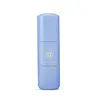What's inside
What's inside
 Key Ingredients
Key Ingredients

 Benefits
Benefits

 Concerns
Concerns

 Ingredients Side-by-side
Ingredients Side-by-side

Camellia Sinensis Leaf
PerfumingGlycerin
HumectantPropanediol
SolventWater
Skin ConditioningSqualane
EmollientGlyceryl Stearate
EmollientIsononyl Isononanoate
EmollientBehenyl Alcohol
EmollientDimethicone
EmollientStearyl Alcohol
EmollientSodium Hyaluronate
HumectantHydrolyzed Collagen
EmollientHydrolyzed Elastin
EmollientBetaphycus Gelatinum Extract
BleachingCrambe Abyssinica Seed Oil
Skin ConditioningStearyl Glycyrrhetinate
Skin ConditioningAscorbyl Tetraisopalmitate
AntioxidantPhytosteryl Macadamiate
Skin ConditioningTocopheryl Acetate
AntioxidantSodium Dilauramidoglutamide Lysine
HumectantSodium Chondroitin Sulfate
Skin ConditioningPolyglyceryl-10 Eicosanedioate/Tetradecanedioate
Skin ConditioningCellulose Gum
Emulsion StabilisingHydroxyethyl Acrylate/Sodium Acryloyldimethyl Taurate Copolymer
Emulsion StabilisingDisodium Phosphate
BufferingPotassium Phosphate
BufferingDisodium EDTA
Ethylhexylglycerin
Skin ConditioningSorbitan Isostearate
EmulsifyingPolysorbate 60
EmulsifyingButylene Glycol
HumectantTocopherol
AntioxidantAlcohol
AntimicrobialParfum
MaskingPhenoxyethanol
PreservativeCamellia Sinensis Leaf, Glycerin, Propanediol, Water, Squalane, Glyceryl Stearate, Isononyl Isononanoate, Behenyl Alcohol, Dimethicone, Stearyl Alcohol, Sodium Hyaluronate, Hydrolyzed Collagen, Hydrolyzed Elastin, Betaphycus Gelatinum Extract, Crambe Abyssinica Seed Oil, Stearyl Glycyrrhetinate, Ascorbyl Tetraisopalmitate, Phytosteryl Macadamiate, Tocopheryl Acetate, Sodium Dilauramidoglutamide Lysine, Sodium Chondroitin Sulfate, Polyglyceryl-10 Eicosanedioate/Tetradecanedioate, Cellulose Gum, Hydroxyethyl Acrylate/Sodium Acryloyldimethyl Taurate Copolymer, Disodium Phosphate, Potassium Phosphate, Disodium EDTA, Ethylhexylglycerin, Sorbitan Isostearate, Polysorbate 60, Butylene Glycol, Tocopherol, Alcohol, Parfum, Phenoxyethanol
Ingredients Explained
These ingredients are found in both products.
Ingredients higher up in an ingredient list are typically present in a larger amount.
Glycerin is already naturally found in your skin. It helps moisturize and protect your skin.
A study from 2016 found glycerin to be more effective as a humectant than AHAs and hyaluronic acid.
As a humectant, it helps the skin stay hydrated by pulling moisture to your skin. The low molecular weight of glycerin allows it to pull moisture into the deeper layers of your skin.
Hydrated skin improves your skin barrier; Your skin barrier helps protect against irritants and bacteria.
Glycerin has also been found to have antimicrobial and antiviral properties. Due to these properties, glycerin is often used in wound and burn treatments.
In cosmetics, glycerin is usually derived from plants such as soybean or palm. However, it can also be sourced from animals, such as tallow or animal fat.
This ingredient is organic, colorless, odorless, and non-toxic.
Glycerin is the name for this ingredient in American English. British English uses Glycerol/Glycerine.
Learn more about Glycerin